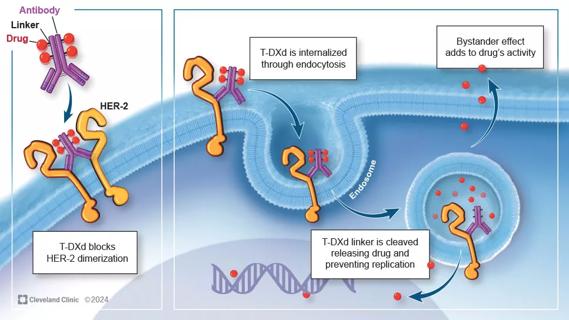Kit offers privacy, long-distance access for patients

Banking spermatozoa on the eve of cancer treatment enables male cancer patients to preserve their fertility, which could be at risk during toxic chemotherapy and radiation exposure.
Advertisement
Cleveland Clinic is a non-profit academic medical center. Advertising on our site helps support our mission. We do not endorse non-Cleveland Clinic products or services. Policy
While an empowering option for young men facing cancer, sperm banking is not readily available in some cities, much less in most rural areas. Asking patients to travel two to four hours for three or more visits, on top of their already extensive regimen of cancer evaluation appointments, requires a considerable commitment during an already stressful time.
To make fertility preservation more convenient and accessible, Cleveland Clinic’s Andrology Laboratory and Reproductive Tissue Bank launched its NextGen® Home Sperm Banking service in 2012. Cancer care physicians at any Cleveland Clinic location can help patients initiate the home sperm banking process.
Once a healthcare professional walks the patient through the process and addresses any questions by phone, a collection kit is mailed to the patient with instructions. The kit includes special storage media and a transport chamber that protects the sperm during overnight shipment to the lab for cryogenic freezing and long-term storage.
In a pilot study, the quality of sperm banked at home via the NextGen kit was comparable to sperm collected on-site. In addition to eliminating geographic limitations, the NextGen kit also offers patients the privacy of collecting their samples at home. With the use of the NextGen kit, there is typically no need to delay cancer treatment, as sperm collection can be done multiple times over several days.
Less than 15 percent of men are aware of their fertility preservation options, says Ashok Agarwal, PhD, Director of the Andrology Center and Reproductive Tissue Bank. Yet, a survey in the Journal of Clinical Oncology found that 77 percent of men receiving cancer treatment who did not have children wished to preserve fertility.
Advertisement
The most common cancers occurring in men within the reproductive age range are testicular cancer or Hodgkin disease, both of which typically have survival rates of greater than 90 percent, according to the National Cancer Institute.
To raise awareness, the American Society of Clinical Oncology instituted guidelines in 2006 for physician-patient discussion of fertility preservation options, including sperm banking, as a standard of care, but the recommendations are not always followed in practice, says Dr. Agarwal.
“There are options, but there is a major gap in terms of talking to patients,” he says.
Dr. Agarwal observes some confusion among the professional communities, regarding fertility preservation, including the misconception that treatment will not harm sperm. Sperm banking should be offered in advance of chemotherapy, radiation and potential surgical treatment for any type of cancer, he says, and not just as a precautionary measure for prostate or other cancers that are in close proximity to the male reproductive organs.
Physicians also need to bring up the issue of sperm banking with younger patients, he advises. Cleveland Clinic physicians have helped adolescents as young as 13 safeguard their potential to achieve parenthood in the future. Sperm may be stored for decades, and a majority of patients in a Cleveland Clinic study who used their banked sperm after cancer treatment, were able to achieve fatherhood.
At Cleveland Clinic, a physician referral is required to initiate the sperm banking process. The costs of NextGen at-home sperm banking are similar to those of banking in person at the lab, and private insurance may cover sperm banking. Details and common patient questions are outlined on Cleveland Clinic’s sperm banking webpage.
Advertisement
Advertisement

First-of-its-kind research investigates the viability of standard screening to reduce the burden of late-stage cancer diagnoses

Global R&D efforts expanding first-line and relapse therapy options for patients

Study demonstrates ability to reduce patients’ reliance on phlebotomies to stabilize hematocrit levels

A case study on the value of access to novel therapies through clinical trials

Findings highlight an association between obesity and an increased incidence of moderate-severe disease

Cleveland Clinic Cancer Institute takes multi-faceted approach to increasing clinical trial access 23456

Key learnings from DESTINY trials

Overall survival in patients treated since 2008 is nearly 20% higher than in earlier patients